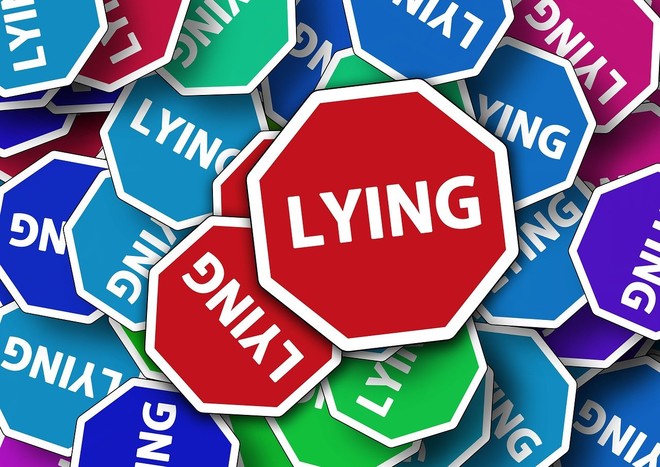To find out about someone whether the opponent is telling the truth or lying. There are various ways to find out about this.
In traditional methods, it is estimated whether the opponent is telling the truth or lying by looking at his body language, eye movements, voice fluctuations, as well as confusion or fluency of words while talking to the contestant.
Along with the development, modern methods of fraud detection have been discovered which also use computerized machines.
Difference between truth and lie
After long research, experts from the University of Amsterdam have discovered simple methods that can be used to predict up to 80% whether the opponent is telling the truth or lying.
Warning signs
Among the issues that the experts have identified as important in the research is to pay full attention to the opponent during the conversation. During this time it should be observed whether the person in front shows signs of nervousness or is feeling uneasy or is completely satisfied.
How to identify a fake person?
A recent study published by the journal Nature of Human Behavior states that if you probe someone for details and repeatedly inquire about the nuances of ‘what, when, how and why’ and your competitor If he starts to think about his answer, then he is likely to be lying, on the contrary, if he answers immediately without any pause, then he is likely to be right.
Conventional thinking about innocent or guilty
In this regard, the psychologist and author Bruno Verschoor says that ‘People have different ideas about the innocent and the guilty and their shape and relationship, but they are not accurate enough to say anything about them in the end. Can’t.
Psychologist Bruno Verschuer and his colleagues conducted experiments on 1,445 people. Participants were asked whether information they received about student activities on a university campus was true or false.

According to what the researchers concluded from the above experiments, participants who relied on intuition or familiarity to detect lies did not perform better.
Pay attention to details
However, those who paid attention to the details and details to find out the truth were found to be 59 to 79 percent accurate.
In this regard, the researchers say that the data shows that focusing on concrete and authentic information leads to better results than wasting time on unnecessary and extraneous information.
Uncovering lies is not an easy task
In a recent study on the same subject, the researchers concluded that after a long and tedious discussion, 54% of them agreed to lie, but they were presented with a sentence to detect lying, which revealed all the facts. Opened. For example, in response to the question, it was said that ‘No, I was not at home, but I went to offer Friday prayers on Saturday.’
It is true that inferring from the competitor’s behavior is a very difficult step to detect lies and truth (however, this does not mean that it is not possible). In this regard, several researchers have examined various methods by which to catch lies, however, these are not 100% accurate signs, but they are also quite useful.
Signs that aid in lie detection
Psychologists have done a lot of research on human body language to help law enforcement detect lies and truth. For example, at the University of California, 60 methods of police training were researched and published in the American Police magazine.

Some signs that tell lies
. Many details are not revealed or hidden.
. Asking the question more than once for an answer.
. Talking off the main topic during question time.
. Aggressive behavior by the contestant eg playing with hair or pursing lips.
Pay attention to the signs
The study revealed that instead of relying on behavioral cues, attention should be paid to these cues or signals in order to arrive at correct conclusions.
Ambiguity of the story: If it appears that the contestant is intentionally leaving out important details, this is an indication that he is lying.
Aloofness: If the contestant shows aloofness or aloofness during the conversation, it may be a sign that he is trying to lie to hide the facts.
Overthinking: If you feel that the contestant is thinking too much to tell you the details of the story or incident, it may be because they are trying to lie to you, because lying So he must be thinking of some other excuse.
#lie #detection #method #proven #true










